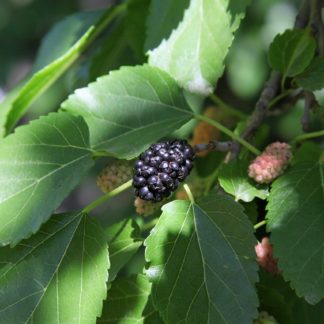Description
Castanea sativa
Not to be confused with the equally beautiful but mostly poisonous Horse Chestnut (of conker fame), sweet chestnuts are beautiful deciduous trees which have been cultivated for for their nuts for centuries in Europe, Japan, China and America. They are the ultimate in perennial crops to aid our move away from cultivation of annual grain crops. They have many uses and deserve more recognition and commercial trialling in New Zealand where the industry is only small and fragmented. The nuts can be eaten raw but are usually boiled or baked, making a delicious midwinter snack eaten out of their shells, which keeps your hands warm too! The nuts are very nutritious, rich in gluten-free carbohydrates and low in fat, about 5 to 7% protein, and good amounts of calcium and iron. They can be dried, then ground and used as a flour in breads, cakes, puddings, as a thickener in soups etc. There are many recipes, especially from France and Italy, for sweet treats based on both whole nuts and flour. The roasted seed can also be used as a coffee substitute.
Medicinally chestnuts are a good source of tannins and these have an astringent action useful in the treatment of bleeding, diarrhoea etc. The leaves and bark can be used fresh or dried for their anti-inflammatory, astringent, expectorant and tonic properties, and are supposed to be particularly effective in treating convulsive coughs such as whooping cough and in other irritable conditions of the respiratory system. The leaves can also be used in the treatment of rheumatism, to ease lower back pains and to relieve stiff muscles and joints. And a hair shampoo from the leaves and the skins of the fruits is said to impart a golden gleam to the hair!
The meal produced from chestnuts is also highly palatable to farm livestock. Stock can learn to stamp them open the prickly burrs to get the nuts out. The leaves, bark, chestnut pellicle and skin are all anthelmintic, and research in NZ is proving its benefits and attractiveness to alpacas.
The timber from chestnuts is also extremely valuable. The young growing wood is very durable, and can be used for carpentry, turnery, basketry, fence posts etc. In the UK a good market for chestnut fence palings has emerged and chestnut plantations are coppiced on 12-16 year rotations for this purpose. Some of these woodlands were developed hundreds of years ago and have been managed productively ever since. Chestnut wood also makes a a very good fuel.
The trees can eventually reach a height and spread of 10m but due to their ability to be coppiced they can be kept much smaller, and can even be planted at a spacing of 3 per metre to form a productive hedge (don’t cut off the catkin flowers though or you’ll have no fuit!). They are most productive in full sun, and are frost hardy, although new growth may be damaged by late spring frosts. They need well drained soil, preferably sandy and slightly acidic, and do not grow well in clay. They do best in areas with warm summers but need some summer moisture. We have trees on a clay hillside with no irrigation and the full force of Hawke’s Bay summers and they are healthy and produce nuts but are very slow growing. They need cross pollination to produce nuts and so at least two trees are recommended. Seedling trees can produce in as little as 4 years but may take much longer and nuts will be of variable size and quality. However chestnuts are easily grafted and so named varieties can be grafted on at any stage if desired.
PB8 and PB5 Approx height 70 – 110cm. Certified Organic Plant






